Is prolapse painful. Comprehensive Guide to Pelvic Organ Prolapse: Symptoms, Types, and Treatment
What is pelvic organ prolapse? What are the symptoms and types of prolapse? Get a detailed overview with expert insights on this condition.
Understanding Pelvic Organ Prolapse
Pelvic organ prolapse (POP) is a condition where the pelvic organs, such as the uterus, bladder, or rectum, descend or bulge into the vaginal canal. This occurs when the supporting muscles and tissues in the pelvic floor weaken or become damaged, leading to a loss of support for the pelvic organs. POP is a common condition, affecting nearly half of all women between the ages of 50 and 79.
Symptoms of Pelvic Organ Prolapse
Many women with POP may not experience any symptoms, as the condition often develops gradually. However, some common symptoms of POP include:
- Discomfort or a feeling of pressure or fullness in the pelvic area
- Difficulty or pain with sexual intercourse
- Urinary incontinence or difficulty emptying the bladder
- Difficulty with bowel movements, such as the need to strain or push on the vagina to have a bowel movement
- A bulge or protrusion at the opening of the vagina
Types of Pelvic Organ Prolapse
There are several different types of pelvic organ prolapse, each with its own unique symptoms and characteristics:

Anterior Vaginal Wall Prolapse (Cystocele or Urethrocele)
This type of prolapse occurs when the bladder descends into the vaginal canal due to weakened or detached supportive tissues. Symptoms may include urinary incontinence, frequent urination, and a bulge or pressure sensation in the vagina.
Posterior Wall Prolapse (Rectocele or Enterocele)
In this type of prolapse, the rectum or intestines fall into the vaginal canal due to weakened or detached supportive tissues. Symptoms may include a bulge sensation, difficulty having bowel movements, and the need to manually assist with bowel movements.
Apical Prolapse (Vaginal Vault Prolapse) or Uterine Prolapse
If a woman has had a hysterectomy, the top of the vagina (vault) can become detached from the supporting ligaments and muscles, leading to a prolapse. In women with an intact uterus, the uterus can also descend into the vaginal canal. Symptoms may include a bulge or pressure sensation in the pelvis.
Rectal Prolapse
In this rare type of prolapse, the rectum falls out through the anus due to weakened or detached supporting structures. Symptoms may include pain during bowel movements, mucus or blood discharge, and loss of bowel control.

Causes and Risk Factors of Pelvic Organ Prolapse
Pelvic organ prolapse is often caused by a combination of factors that can weaken the pelvic floor muscles and supporting tissues. Some of the most common risk factors include:
- Childbirth, especially vaginal deliveries
- Obesity and excess weight
- Chronic constipation or straining during bowel movements
- Chronic coughing or heavy lifting
- Menopause and the natural aging process
- Genetic predisposition or connective tissue disorders
Diagnosing Pelvic Organ Prolapse
If you are experiencing symptoms of pelvic organ prolapse, your healthcare provider will perform a physical examination to determine the type and severity of the prolapse. This may involve inserting a speculum into the vagina to visually inspect the pelvic organs. Your provider may also recommend imaging tests, such as a pelvic ultrasound or magnetic resonance imaging (MRI), to get a better understanding of the extent of the prolapse.
Treatment Options for Pelvic Organ Prolapse
The treatment plan for pelvic organ prolapse will depend on the type and severity of the condition, as well as the patient’s age, overall health, and personal preferences. Some common treatment options include:

- Pelvic floor physical therapy to strengthen the pelvic floor muscles
- Pessary devices, which are removable devices that are inserted into the vagina to provide support to the pelvic organs
- Surgical interventions, such as vaginal or abdominal procedures to repair or support the prolapsed organs
It’s important to work closely with your healthcare provider to develop a personalized treatment plan that addresses your specific needs and concerns.
Symptoms & Types – Pelvic Organ Prolapse
Common complaints of women with prolapse are being unable to wear a tampon, urinary and/or fecal incontinence, vaginal dryness or irritation, and pain with intercourse. Symptoms often progress very gradually. And you may make changes in physical or social activities that go unnoticed by others until they become extreme.
Though most women with POP often have no symptoms, some women experience:
- Discomfort (usually pressure or fullness).
- Bleeding from the exposed skin that rubs on pads or underwear.
- Urinary symptoms of leakage, difficulty starting the stream of urine, frequent urinary tract infections.
- Difficult bowel movements—the need to strain or push on the vagina to have a bowel movement.
- A bulge near the opening of the vagina or have a pressure sensation in their pelvic region and or lower abdomen.
As POP worsens, you may notice:
- A bulging, pressure or heavy sensation in the vagina that worsens by the end of the day or during bowel movements.

- The feeling of “sitting on a ball”.
- Needing to push stool out of the rectum by placing fingers into or around the vagina during a bowel movement.
- Difficulty starting to urinate or a weak or spraying stream of urine.
- Urinary frequency or the sensation that you are unable to empty the bladder well.
- Lower back discomfort.
- The need to lift up the bulging vagina or uterus to start urination.
- Urinary leakage with intercourse. Though unusual, severe prolapse can block the flow of urine and cause recurrent urinary tract infections or even kidney damage.
Types of Prolapse
Anterior Vaginal Wall Prolapse (Cystocele or Urethrocele)
Anterior vaginal wall prolapse often occurs at the top of the vagina where the uterus used to be in women who have had a hysterectomy. This type of prolapse occurs when the bladder’s supportive tissue, called fascia, stretch or detach from the attachments securing it to the pelvic bones.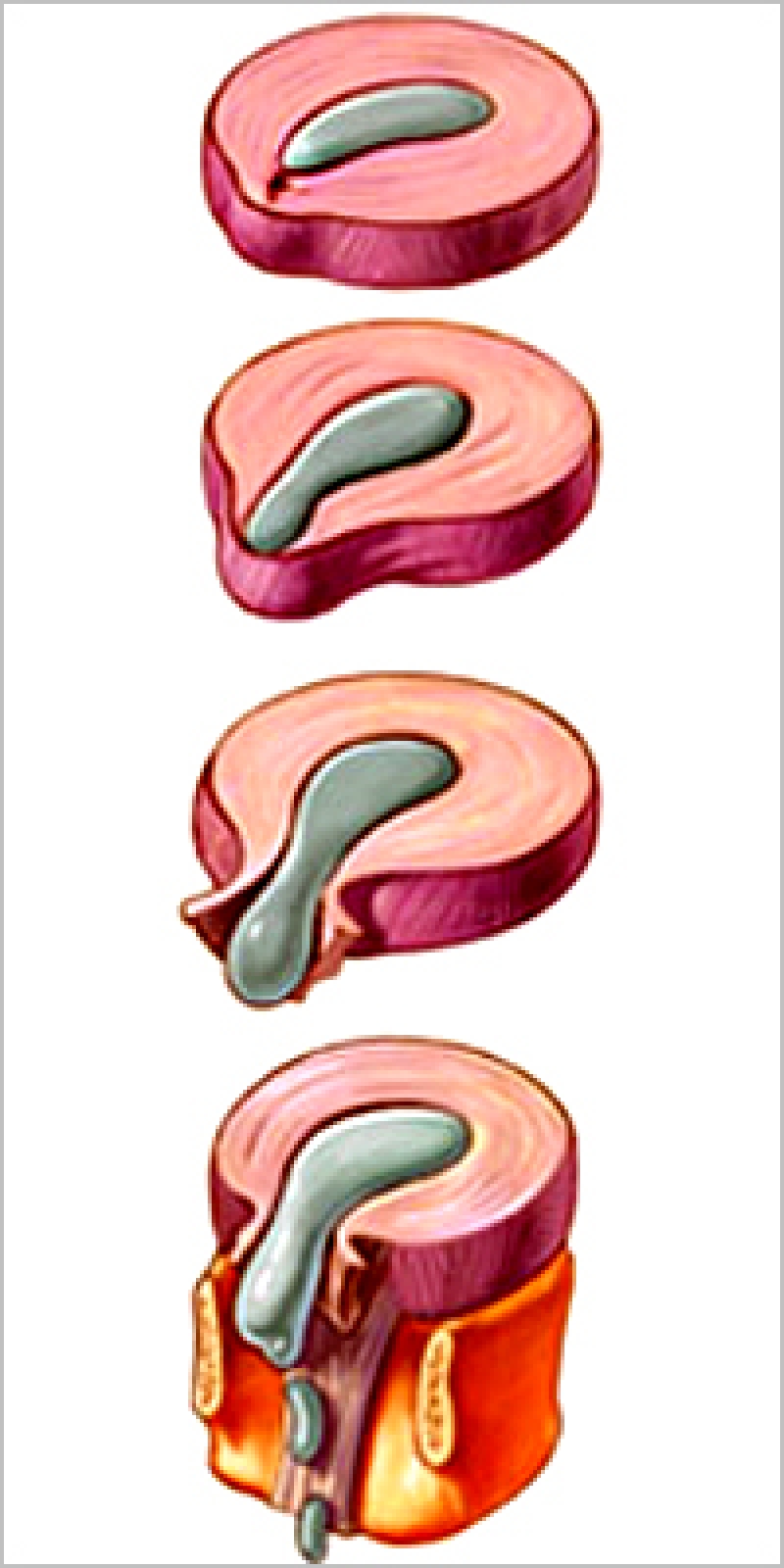 With this loss of support, the bladder falls down into the vagina. As this condition worsens, the prolapsed pelvic organs may bulge outside the opening of the vagina. Other symptoms may include:
With this loss of support, the bladder falls down into the vagina. As this condition worsens, the prolapsed pelvic organs may bulge outside the opening of the vagina. Other symptoms may include:
- Urinary frequency, nighttime voiding, loss of bladder control, and recurrent bladder infections—usually due to the bladder not emptying well.
- Stress urinary incontinence (SUI) with activity such as laughing, coughing, sneezing, or exercise) cause by weakened support for the urethra.
Posterior Wall Prolapse (Rectocele or Enterocele)
This type of prolapse occurs when the support tissue or fascia between the vagina and rectum stretches or detaches from its attachment to the pelvic bones. With this loss of support, the rectum or intestines fall (prolapse) into the vagina. Symptoms typically include:
- A bulge sensation.
- Problems having a bowel movement such as straining more with bowel movements and the feeling of not completely emptying the bowels.

- The need to put your finger in or around the vagina or rectum to help empty bowels.
Apical Prolapse (Vaginal Vault Prolapse) or Uterine Prolapse
If a woman has had a hysterectomy, the top part of the vagina (vault) can become detached from the ligaments and muscles of the pelvic floor. Often, uterine or vault prolapse is associated with loss of anterior or posterior vaginal wall support. When the cervix protrudes outside the vagina, it can develop ulcers from rubbing on underwear, sometimes these ulcers will bleed if they become irritated. Most women experience symptoms of bulge or pressure sensation in the pelvis.
Rectal Prolapse
Like the vagina and uterus, ligaments, and muscles securely attach the rectum to the pelvis. Infrequently, the supporting structures stretch or detach from the rectal wall and the rectum falls out through the anus. Early on, women may notice a soft, red tissue protruding from the anus after a bowel movement. It can be confused with a large hemorrhoid.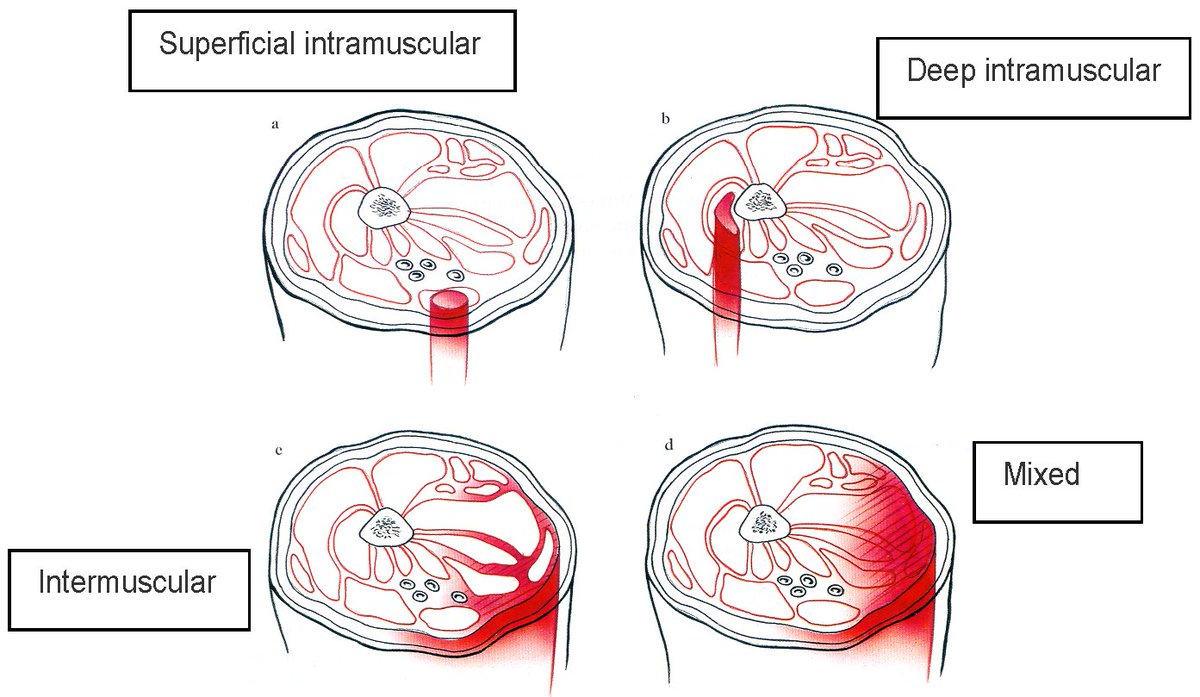 Other symptoms may include:
Other symptoms may include:
- Pain during bowel movements.
- Mucus or blood discharge from the protruding tissue.
- Loss of control of bowel movements.
Risk factors for rectal prolapse include conditions associated with straining such as chronic constipation or diarrhea, nerve and muscle weakness (paralysis or multiple sclerosis), and advancing age are risk.
Uterine Prolapse | Johns Hopkins Medicine
What is uterine prolapse?
Uterine prolapse occurs when the muscles and tissue in your pelvis weaken. The weakness lets the uterus drop down into your vagina. Sometimes, it comes out through your vaginal opening. Nearly half of all women between ages 50 and 79 have this condition.
What causes uterine prolapse?
Uterine prolapse is caused when the muscles and tissue of the pelvic floor are weakened and can’t support the weight of the uterus. This lets it drop into your vagina.
What are the risk factors for uterine prolapse?
Risk factors include:
What are the symptoms of uterine prolapse?
Many women with this condition have no symptoms.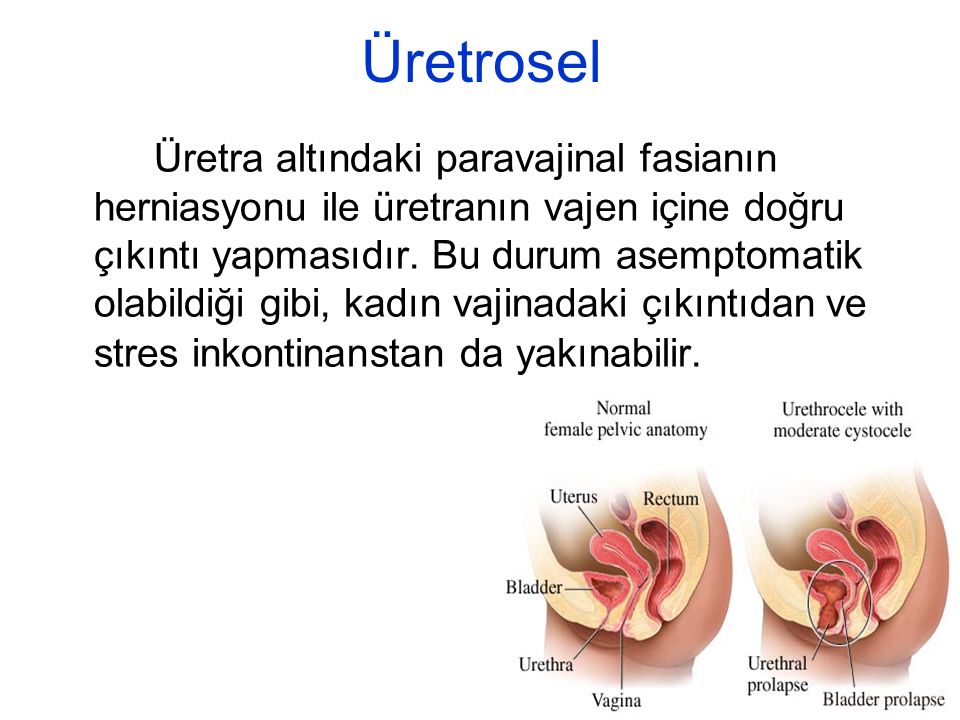 However, if symptoms start, they may include:
However, if symptoms start, they may include:
Leakage of urine
Inability to completely empty your bladder
Feeling of heaviness or fullness in your pelvis
Bulging in your vagina
Lower-back pain
Aching, or the feeling of pressure, in your lower abdomen or pelvis
Constipation
How is uterine prolapse diagnosed?
If your healthcare provider thinks that you have a prolapsed uterus, he or she will probably do a physical exam to check your pelvis. If you also have urinary incontinence or a feel like you can’t empty your bladder, your doctor may do a procedure called a cystoscopy to examine your bladder and urethra.
Your healthcare provider might also order an MRI (magnetic resonance imaging). This procedure uses a magnet and radio waves to create images. This will allow your healthcare provider to get a good look at your kidneys and other pelvic organs.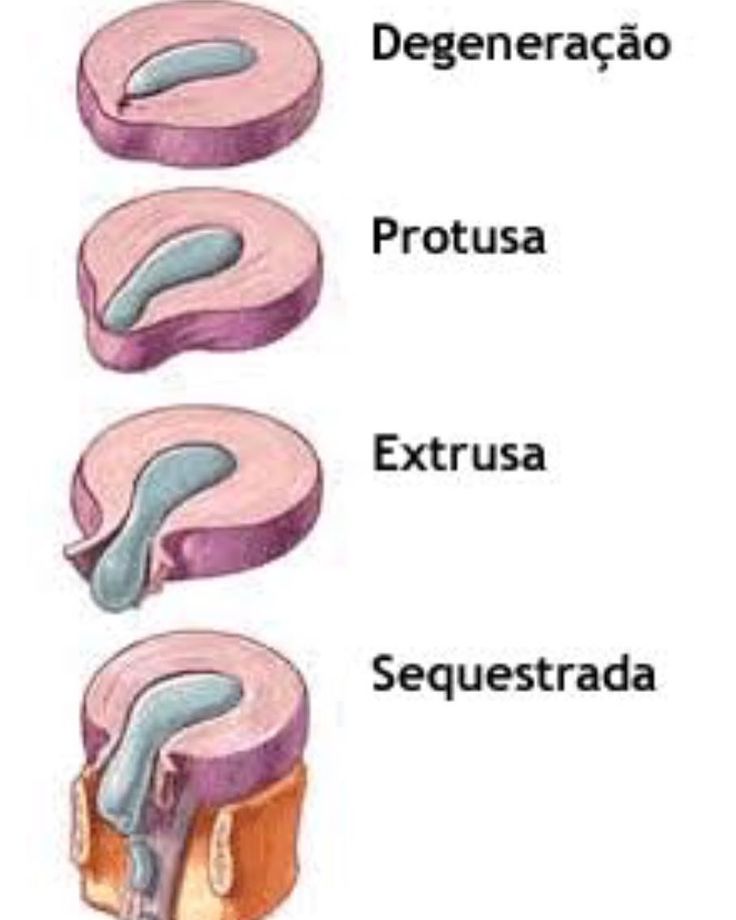
How is uterine prolapse treated?
If your symptoms bother you or you’re not comfortable during everyday activities, talk with your healthcare provider about treatment options. Lifestyle changes, such as losing weight, may help. So can doing Kegel exercises. These strengthen your pelvic floor muscles. To do this exercise, you squeeze the muscles you use to control the flow of urine, and hold for up to 10 seconds then release. Repeat 50 times a day.
A pessary can also relieve symptoms. This is a device your healthcare provider inserts into your vagina to support your pelvic organs.
A hysterectomy is a surgery to remove your uterus. This can be done through your vagina. The healing time is faster than with surgery that requires an abdominal incision. There also are fewer complications.
Can uterine prolapse be prevented?
There is no certain way to prevent uterine prolapse. However, the following can help lower your risk:
Lose weight, if you’re overweight
Follow a diet rich in fiber and fluids to prevent constipation and straining
Avoid heavy lifting
Quit smoking, if you smoke
Seek prompt treatment for a chronic cough, which can place extra pressure on your pelvic organs
Do Kegel exercises to strengthen your pelvic floor muscles
These actions may also help if you already have uterine prolapse.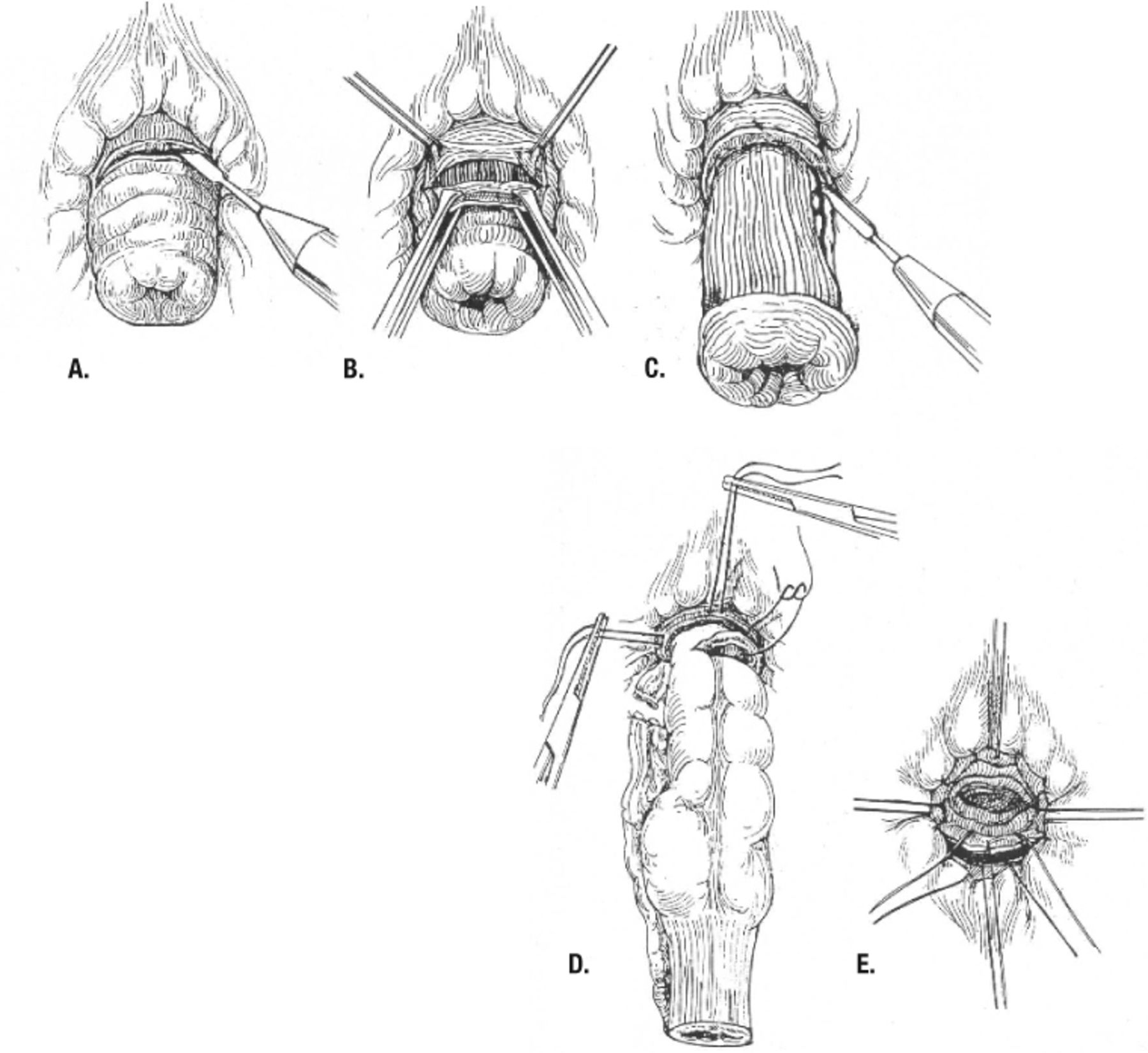
See your healthcare provider when symptoms first start to bother you. Don’t wait until your discomfort becomes severe. Regular pelvic exams can help detect uterine prolapse in its early stages.
Key points for uterine prolapse
Uterine prolapse occurs when the muscles and tissue in your pelvis weaken.
This allows your uterus to drop down into your vagina.
Common symptoms include leakage of urine, fullness in your pelvis, bulging in your vagina, lower-back pain, and constipation.
Treatment for uterine prolapse includes lifestyle changes, a pessary, or surgery to remove the uterus.
You may be able to prevent this condition with weight loss, a high fiber diet, not smoking, and doing Kegel exercises.
Next steps
Tips to help you get the most from a visit to your healthcare provider:
Know the reason for your visit and what you want to happen.

Before your visit, write down the questions you want to be answered.
Bring someone with you to help you ask questions and remember what your provider tells you.
At the visit, write down the name of a new diagnosis, and any new medicines, treatments, or tests. Also, write down any new instructions your provider gives you.
Know why a new medicine or treatment is prescribed, and how it will help you. Also, know what the side effects are.
Ask if your condition can be treated in other ways.
Know why a test or procedure is recommended and what the results could mean.
Know what to expect if you do not take the medicine or have the test or procedure.
If you have a follow-up appointment, write down the date, time, and purpose for that visit.
Know how you can contact your provider if you have questions.

Women’s Health Matters – Pelvic organ prolapse
The pelvic floor is a layer of muscles that stretches like a hammock from the pubic bone at the front of the pelvis to the base of the spine in the back. These muscles support the weight of the pelvic organs and enable everyday activities like walking and sitting. Ligaments within the pelvis hold the organs in place.
The pelvic floor muscles also play a crucial role in the functioning of pelvic organs. For example, bands of muscle encircle the urethra (the opening you urinate through) and bowel. These bands are called sphincters. Sphincters control the release of urine and feces. Other muscles surrounding these organs control the filling and emptying of the bowel and bladder.
Muscles throughout the pelvis also work when a woman gives birth. Some of these same muscles contribute to the enjoyable sensations of female orgasm.
Damage or weakness in these muscles can interfere with all of these functions. One of the most obvious signs of damage is a prolapse.
One of the most obvious signs of damage is a prolapse.
Think of the pelvic floor as a mesh of muscles, like a nylon stocking. When these muscles are weakened or damaged, runs or even holes appear in the mesh and it can no longer support the pelvic organs. A prolapsed organ is an organ that has shifted position and begun to protrude through this mesh. Most commonly, prolapsed organs press down against the vagina, since this is the largest opening to the pelvic floor. This causes a bulge in the wall of the vagina. In severe cases, a prolapse can push part of the vaginal wall out through the vaginal opening.
Types of Prolapse
There are several types of prolapse. Prolapse can affect one or more of the muscles and organs in the pelvis. These include the bladder, urethra, uterus, vagina, small bowel and rectum.
Cystocele
If the muscles in front of the vagina are weakened, the bladder will begin to bulge into the vagina. This is called a cystocele. The most common symptoms of cystocele are:
This is called a cystocele. The most common symptoms of cystocele are:
- difficulty emptying your bladder
- leaking of urine, especially when you cough, sneeze or laugh
- pain during sexual intercourse
Rectocele
If the muscles behind the vagina are damaged, the rectum will begin pressing into the vagina. This is called a rectocele. The most common symptoms of rectocele are:
- a bulge in your vagina
- constipation and difficulty completing bowel movements
- a feeling of rectal pressure
- painful sexual intercourse
Enterocele
If the muscles and tissues that hold your small bowel (or small intestines) in place stretch or weaken, the small intestines press down on the vagina. This is called an enterocele. The most common symptoms of an enterocele are:
- a feeling of heaviness or fullness in the vagina
- constipation or difficulty completing bowel movements
- lower back pain that gets worse when you’ve been standing for a long time and eases when you lie down
- a bulge in your vagina
- vaginal discharge
- vaginal bleeding
- painful sexual intercourse
Uterine Prolapse
If the muscles and ligaments of your pelvic floor stretch or weaken, the uterus can drop down into the vagina. This is called a uterine prolapse. The most common symptoms of a uterine prolapse include:
This is called a uterine prolapse. The most common symptoms of a uterine prolapse include:
- menstrual-like cramps
- a feeling of heaviness or pulling in your pelvis
- constipation
- urinary incontinence
- lower back pain
Vaginal Vault Prolapse
When the upper part of the vagina sags or drops down into the vaginal canal or (in severe cases) outside the vagina, this is called a vaginal vault prolapse. This type of prolapse usually affects women who have had a hysterectomy. This is usually due to muscle damage that occurred during surgery.
The most common symptoms of a vaginal vault prolapse are:
- a feeling of pressure in the abdomen and vagina
- painful intercourse
- back pain
- vaginal bleeding
- urinary incontinence
The pelvic floor is a layer of muscles that stretches like a hammock from the pubic bone at the front of the pelvis to the base of the spine in the back. These muscles support the weight of the pelvic organs and enable everyday activities like walking and sitting. Ligaments within the pelvis hold the organs in place.
These muscles support the weight of the pelvic organs and enable everyday activities like walking and sitting. Ligaments within the pelvis hold the organs in place.
The pelvic floor muscles also play a crucial role in the functioning of pelvic organs. For example, bands of muscle encircle the urethra (the opening you urinate through) and bowel. These bands are called sphincters. Sphincters control the release of urine and feces. Other muscles surrounding these organs control the filling and emptying of the bowel and bladder.
Muscles throughout the pelvis also work when a woman gives birth. Some of these same muscles contribute to the enjoyable sensations of female orgasm.
Damage or weakness in these muscles can interfere with all of these functions. One of the most obvious signs of damage is a prolapse.
Think of the pelvic floor as a mesh of muscles, like a nylon stocking. When these muscles are weakened or damaged, runs or even holes appear in the mesh and it can no longer support the pelvic organs. A prolapsed organ is an organ that has shifted position and begun to protrude through this mesh. Most commonly, prolapsed organs press down against the vagina, since this is the largest opening to the pelvic floor. This causes a bulge in the wall of the vagina. In severe cases, a prolapse can push part of the vaginal wall out through the vaginal opening.
A prolapsed organ is an organ that has shifted position and begun to protrude through this mesh. Most commonly, prolapsed organs press down against the vagina, since this is the largest opening to the pelvic floor. This causes a bulge in the wall of the vagina. In severe cases, a prolapse can push part of the vaginal wall out through the vaginal opening.
Jump to top page
Pelvic Organ Prolapse | Women
SIGNS
Signs will depend on the type and level of prolapse
Early on, you may not notice the signs of prolapse, but your doctor or nurse might be able to see it when you have your routine pap smear test.
When a prolapse is further down, you may notice things such as:
- a heavy sensation or dragging in the vagina
- something ‘coming down’ or a lump in the vagina
- a lump bulging out of your vagina that you can see or feel
- sexual problems (pain or less sensation)
- your bladder not emptying as it should
- weak urine stream
- recurring urinary tract infections
- difficulty emptying your bowel.

These signs can be worse at the end of the day and may feel better after lying down. If the prolapse bulges right outside your body, you may feel sore and bleed as the prolapse rubs on your underwear.
CAUSES
Childbirth is the main cause of a prolapse. On the way through the vagina, the baby can stretch and tear the supporting tissues and pelvic floor muscles. The more vaginal births you have, the more likely you are to have a prolapse.
Other causes of prolapse include:
- persistent coughing (such as smoker’s cough, bronchitis or asthma)
- lifting heavy weights
- constipation – long-term, persistent straining to empty the bowel can cause prolapse.
RISK FACTORS
Some women have a higher risk of prolapse
Prolapse tends to run in families. It is more likely after menopause or if you are overweight, But it can happen in young women right after having a baby.
- About half of all women who have had a child have some level of prolapse, but only one in five women need to seek medical help.

- Prolapse can also happen in women who haven’t had a baby, mainly if they cough, strain on the toilet or lift heavy loads.
- Even after surgery to repair prolapse, one in three women will prolapse again.
- Prolapse can also happen in women who have had their womb removed (hysterectomy). In a case like this, the top of the vagina (the vault) can prolapse.
PREVENTION
Ways to help prevent prolapse
As prolapse is due to weak pelvic tissues and pelvic floor muscles, all women should keep their pelvic floor muscles strong – no matter what their age.
Pelvic floor muscles, just like any other muscles, can be made stronger with the right exercises. It is important to have your pelvic floor muscle training technique checked by an expert such as a Women’s, Men’s and Pelvic Health Physiotherapist or a Nurse Continence Specialist.
Learn more about the pelvic floor in women.
TREATMENT
Non-surgical options
Prolapse can often be treated without surgery, especially in the early stages and when the prolapse is mild. This approach can mean:
This approach can mean:
- pelvic floor muscle training with the advice of a Women’s, Men’s and Pelvic Health Physiotherapist or Nurse Continence Specialist
- learning what caused your prolapse, and making necessary lifestyle changes, such as improving your diet, fluid intake, exercising and losing weight
- being aware of good bowel and bladder habits to avoid straining on the toilet
- having a pessary (a plastic or rubber device that fits into your vagina) carefully measured and placed into the vagina to provide inside support for your pelvic organs.
Surgical approach
Surgery can be done to repair torn or stretched support tissues and ligaments. There are different surgical options including:
- abdominal approach
- vaginal approach
- laparoscopic (keyhole)
- robotic
The surgery makes the vaginal wall stronger and helps the tissues support the pelvic organs. A surgeon can advise the best option.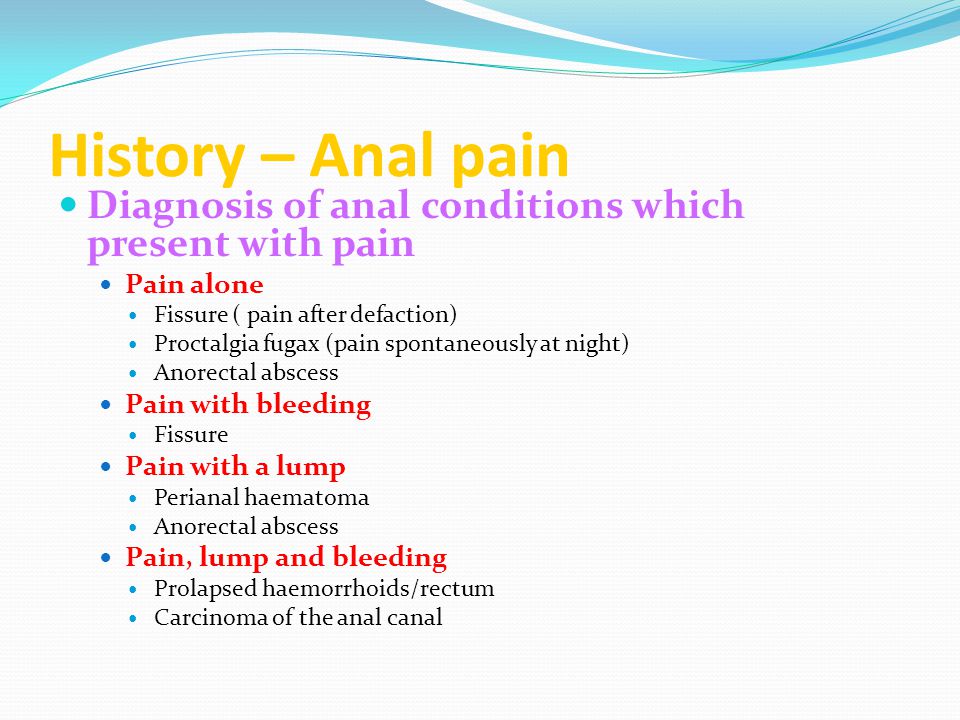
After surgery, you should make sure you:
- have expert training to make sure your pelvic floor muscles work to support your pelvic organs
- don’t strain when using your bowels
- keep your weight within the right range for your height and age
- learn safe ways of lifting, including sharing the lifting of heavy loads
- see your doctor if you have a cough that won’t go away, and
- see your doctor if simple things don’t seem to make it better.
SEEK HELP
In many cases incontinence can be prevented, better managed and even cured. Talk to your doctor or contact the National Continence Helpline on 1800 33 00 66.
The National Continence Helpline is staffed by Nurse Continence Specialists who offer free and confidential information, advice and support. They also provide a wide range of continence-related resources and referrals to local services.
Pelvic Organ Prolapse | UVA Health
Types of Pelvic Prolapse
The different types of prolapse are divided into categories according to the part of the vagina they affect: front wall, back wall or top of the vagina. You may have more than one type of prolapse.
You may have more than one type of prolapse.
- Cystocele (fallen bladder) — This occurs when the bladder falls down into the vagina and creates a large bulge in the front vaginal wall. This may cause discomfort and difficulty emptying the bladder.
- Uterine prolapse (fallen uterus) — This happens when the uterus drops down into the vagina and causes discomfort and difficulty having bowel movements. It’s the second most common type of prolapse and is classified into three grades depending on how far the uterus has fallen.
- Vaginal vault prolapse (fallen/bulging vagina) — In women who have had a hysterectomy, it’s still possible for the vagina to fall down even though the uterus is no longer present. This is referred to as post-hysterectomy vaginal prolapse.
- Enterocele (bulging of small bowels) — This occurs when a space between the vagina and rectum opens and the small bowel bulges through.

- Rectocele (bulging rectum) — This occurs when the rectum falls. It may cause discomfort and difficulty having bowel movements.
Surgical Treatment
If nonsurgical treatments don’t work, we offer many different surgical options to correct pelvic organ prolapse. Often, more than one of these surgeries will be performed at the same time.
Vaginal Surgeries
In general, vaginal approach surgeries have a faster recovery time and cause less pain than abdominal surgeries.
Abdominal Surgeries
In general, abdominal approach surgeries have a longer recovery time and cause more discomfort than vaginal surgeries.
- Hysteropexy (uterine sparing): Your doctor makes incision on your abdomen and supports the uterus by stitching mesh to the front of the tailbone (sacrum).
- Supracervical hysterectomy with sacrocolpopexy: Your doctor makes an incision on your abdomen and removes the uterus.
 This is different from a total hysterectomy in that your doctor doesn’t remove your cervix.
This is different from a total hysterectomy in that your doctor doesn’t remove your cervix. - Abdominal sacrocolpopexy
Laparoscopic Reconstructive Surgery
Your doctor may perform an abdominal surgery laparoscopically, through several very small (1 cm) incision, with the use of a video camera. Abdominal sacrocolpopexy, paravaginal repair, and uterosacral ligament suspension can be done with the laparoscope. The recovery time is faster and postoperative pain is usually less than abdominal approach surgeries.
Robotic-Assisted Laparoscopic Surgery
A newer technology in laparoscopic surgery is robotically assisted laparoscopic surgery with the DaVinci robot. Your doctor may use this technique with an abdominal sacrocolpopexy. Similar to standard laparoscopy, this procedure requires a several very small (1 cm) incision and the use of a video camera. The advantage of this approach is faster healing time and shorter hospital stays than with a more traditional abdominal approach through a larger abdominal incision.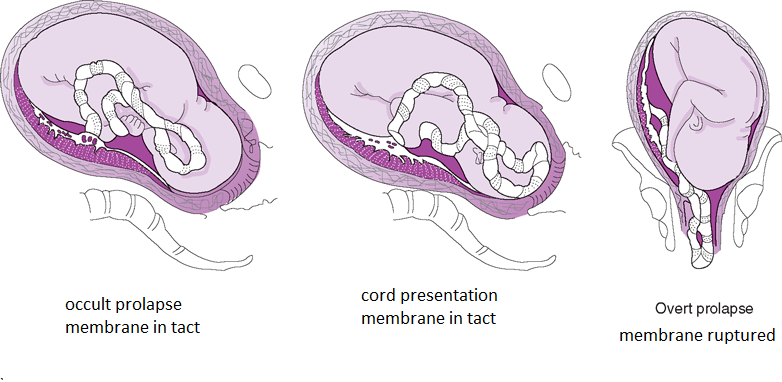
Causes of Prolapse
The causes of prolapse include:
- Childbirth
- Menopause
- Obesity
- Chronic cough
- Prior pelvic floor surgery
- Neurologic diseases, such as Parkinson’s disease, multiple sclerosis or a spinal cord injury
- Ethnicity (prolapse is found more often in Caucasian and Hispanic women)
Symptoms of Pelvic Prolapse
Physical symptoms can include:
- A bulge or lump on the outside of the vagina
- Feeling as though something is bulging out of the vagina, like a tampon is about to fall out
- Lower back pain or increased pelvic pressure that interferes with daily activities
- Irregular vaginal spotting or bleeding
- Frequent urinary incontinence, urinary tract infections, difficulty urinating, frequent urination or any of the above that interfere with a daily routine
- Difficult or painful sexual intercourse
- Difficult bowel movements, constipation or liquid stools
How We Diagnose Prolapse
An evaluation begins in your doctor’s office with questions about your health and health history.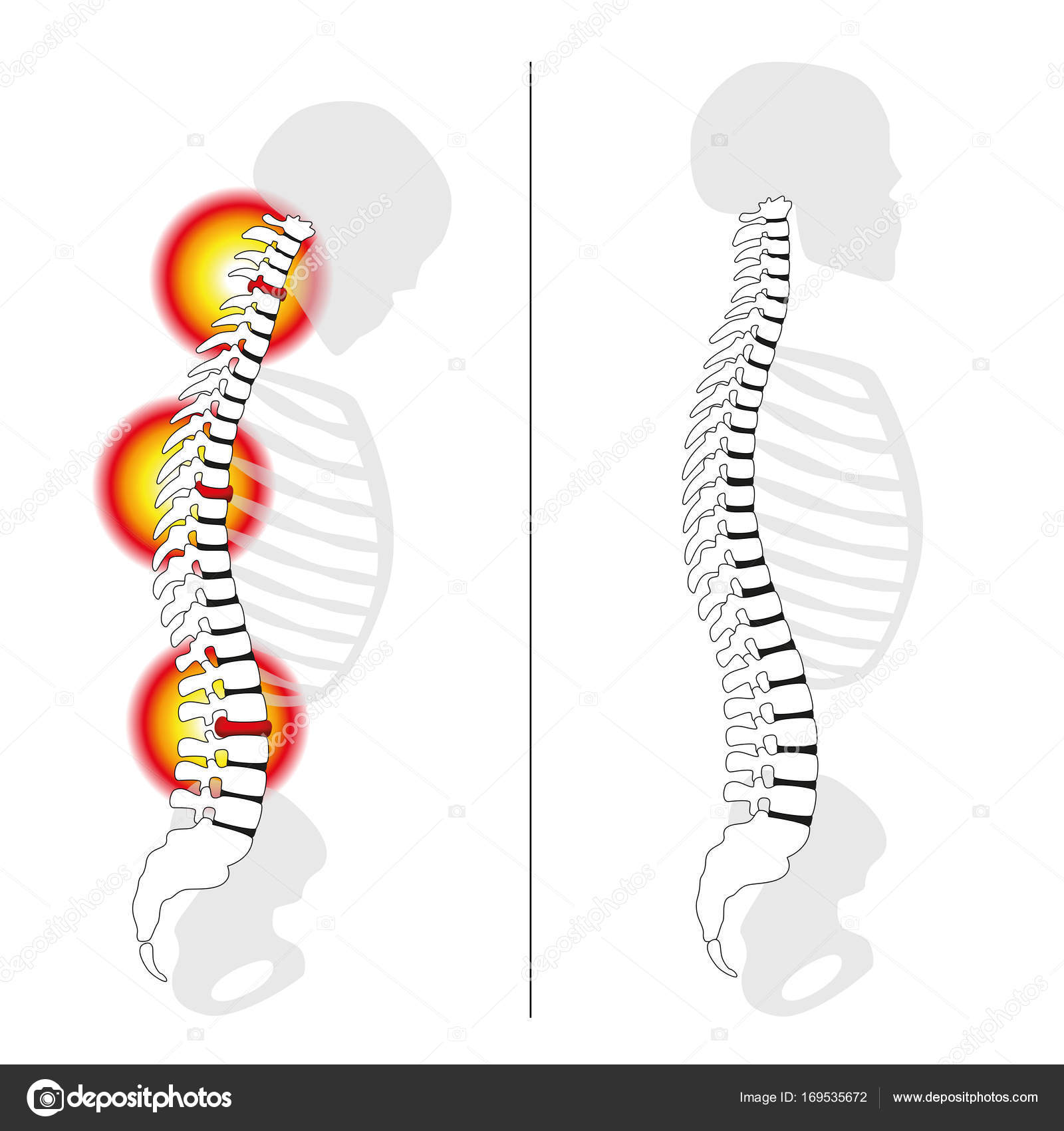
- Pelvic exam: usually done while you lie on an exam table, or sometimes while standing; your doctor may ask you to push down or cough to see the full extent of the prolapse.
- Rectal exam: checks the strength of these muscles which can weaken with age or childbirth
- Post-void residual (PVR): determines how much urine is left behind after you urinate
- Urinalysis: determines if you have an infection or other substances found in the urine
Stages of Pelvic Organ Prolapse
- Stage 0 : no prolapse, and the pelvic organs are perfectly supported by the ligaments in the pelvis
- Stage 1: virtually no prolapse, and the pelvic organs are very well-supported by the ligaments in the pelvis
- Stage 2: the pelvic organs are not as well supported by the ligaments and have begun to fall down but are still inside the vagina
- Stage 3: the pelvic organs are beginning to bulge to or beyond the opening of the vagina
- Stage 4: the pelvic organs are completely outside of the vagina
Prolapse: Uterine and vaginal | Women’s Health Concern
There are many types of prolapse, which differ according to which organ is affected. When the walls of the vagina become lax, the organs that they should be supporting bulge into the vagina, creating the sensation of a lump hanging down. The uterus is supported at the top of the vagina, and when the ligaments in this wall loosen, the uterus bulges downward. This condition is called uterine prolapse. Other types of prolapse include prolapse of the bladder into the front wall of the vagina (cystocele), that of the rectum into the back wall (rectocele), and that of the small intestine into the top of the vagina (enterocele). A combination of the last two is known as a recto-enterocele.
When the walls of the vagina become lax, the organs that they should be supporting bulge into the vagina, creating the sensation of a lump hanging down. The uterus is supported at the top of the vagina, and when the ligaments in this wall loosen, the uterus bulges downward. This condition is called uterine prolapse. Other types of prolapse include prolapse of the bladder into the front wall of the vagina (cystocele), that of the rectum into the back wall (rectocele), and that of the small intestine into the top of the vagina (enterocele). A combination of the last two is known as a recto-enterocele.
Causes of Prolapse
The common causes of prolapse are childbirth, loss of hormones at menopause, being overweight and chronic illnesses which create a lot of pressure inside the abdomen (such as chronic lung disease, which causes considerable congestion and coughing). It is less common in women who have not had babies, and most common in those who have had difficult vaginal deliveries, but there is evidence to indicate that women who have had caesarean sections may also develop vaginal wall weakness. This is thought to be due to pregnancy hormones, which allow the tissues to stretch beyond their rebound limits, and also the weight of an ever-growing womb containing the baby. Prolapse can also be worsened by the loss of muscle tone commonly associated with aging.
This is thought to be due to pregnancy hormones, which allow the tissues to stretch beyond their rebound limits, and also the weight of an ever-growing womb containing the baby. Prolapse can also be worsened by the loss of muscle tone commonly associated with aging.
Symptoms
Uterine prolapse
Those who suffer from uterine prolapse often report a sensation of dragging, heaviness or pulling in the pelvis, with a feeling of “sitting on a small ball”. It can also be accompanied by low backache and, in moderate to severe cases, protrusion from the vaginal opening. Uterine prolapse may also cause difficult or painful sexual intercourse.
Bladder prolapse
Lax bladder support leads to a “reservoir effect” where the bladder is not completely emptied when the urine is passed. The remaining urine then irritates the bladder, leading to bladder over-activity, which causes urgency and is sometimes severe enough to produce an involuntary leakage (incontinence). The lowering of the neck of the bladder with prolapse can result in stress incontinence, which involves the leakage of urine into the urethra in response to any sudden pressure, often followed by a contraction of the bladder causing even more leakage. A lax and over active bladder may also leak during intercourse, due to the pressure exerted upon it.
A lax and over active bladder may also leak during intercourse, due to the pressure exerted upon it.
Rectal prolapse
Those who suffer from rectal prolapse complain of a sensation of bulging in the vagina when they strain to open their bowels. There is in effect an “S-bend” effect in the vagina, where faeces move into the reservoir created by the prolapse. Despite the urgency to open the bowels, very little bowel motion is likely to occur, as the reflexes tend to be lost due to this pouch effect. Constipation and irritable bowel syndrome may result from this. When the small intestine is also prolapsed, patients complain of a bulge and a dragging or “balloon like” sensation in the upper vaginal wall. This may also make intercourse painful.
Diagnosis
Prolapse is usually diagnosed by a pelvic examination.
Treatment
Physiotherapy sessions can be very successful in helping to reduce symptoms. When the prolapse is troublesome, soft ring pessaries are available. The effect of these is to hold the walls of the vagina away from the centre and hence tighten the “hammock” of tissues that hold the organs. These rings should be changed regularly, and are often used along with topical estrogen creams. When the prolapse involves the womb or the top of the vagina, or when there is no womb from a previous hysterectomy, another device called a Gellhorn Pessary can be inserted, which effectively provides an additional shelf-like support for the prolapse. Again, the use of hormone creams help keep tissues healthy and allows the use of these devices on a long-term basis.
The effect of these is to hold the walls of the vagina away from the centre and hence tighten the “hammock” of tissues that hold the organs. These rings should be changed regularly, and are often used along with topical estrogen creams. When the prolapse involves the womb or the top of the vagina, or when there is no womb from a previous hysterectomy, another device called a Gellhorn Pessary can be inserted, which effectively provides an additional shelf-like support for the prolapse. Again, the use of hormone creams help keep tissues healthy and allows the use of these devices on a long-term basis.
If pessaries are not effective, uncomfortable or undesirable, surgery is often the next step. Repair of prolapse with vaginal or abdominal surgery can be performed where the prolapse is reduced and supporting sutures inserted. Patients should discuss possible treatment options with their doctor.
Pelvic Organ Prolapse | Diagnosis, Treatment and Prevention
Pelvic organ prolapse is a type of hernia, which is a condition that occurs when an organ bulges through the muscle or tissue that surrounds it.
Muscles, ligaments and fibers that attach to bone support the bladder, uterus and rectum. When the muscles weaken because of childbirth or other factors, the pelvic organs can fall into the vagina.
Nearly 3 percent of women in the United States suffer from POP, according to the Food and Drug Administration’s Office of Women’s Health. And surgeons perform roughly 200,000 surgeries to treat prolapse each year in the United States, according to an article by Dr. J. Eric Jelovsek in UpToDate.
POP is usually classified as asymptomatic or symptomatic. Asymptomatic means the organs drop but do not extend beyond the vaginal opening. Symptomatic means the organs or tissue extend beyond the vaginal opening.
The organ affected determines the type of prolapse.
- Vaginal Vault Prolapse:
- The top of the vagina falls
- Uterine:
- The uterus descends into the vagina
- Cystocele:
- The bladder protrudes into the vagina
- Enterocele:
- The small intestine protrudes into the vagina
- Rectocele:
- The rectum protrudes into the vagina
Patients experience pressure, pain or the sensation of something falling out of their vagina or rectum. In extreme cases, women may see or feel their pelvic organs bulge out of their body. When prolapse causes pain, patients should see a doctor.
Lawsuit Information
More than 108,000 lawsuits have alleged that transvaginal mesh causes complications including pain, bleeding, infection, organ perforation and autoimmune problems.
View Lawsuits
Prolapse Causes and Prevention
Weakened or stretched pelvic muscles cause pelvic organ prolapse. Childbirth is the most common cause because it increases pressure on internal organs. That pressure can force the organs into the pelvis, leading to prolapse. Women who deliver larger babies are at an increased risk.
Studies indicate that:
- One in three women who gave birth has prolapse
- A woman who has two vaginal births is 8.4 times more likely to experience prolapse than a woman who hasn’t given birth vaginally
- White women have a higher risk of prolapse than black, Hispanic or Asian women
Menopause, old age and other factors also contribute to weakened muscles. When women go through menopause, one side effect is a drop in their collagen levels. Collagen is a naturally occurring protein that helps connective tissue repair itself after stretching or tearing.
Other risk factors for pelvic organ prolapse include:
- Multiple sclerosis
-
Spinal cord injury and paralysis -
Muscular dystrophy -
Chronic cough -
Genetic weakness of connective tissue
Some causes of prolapse can’t be prevented. Injury to the pelvic floor from vaginal labor is unavoidable. Menopause is inevitable. And you can’t change family history that may put you at a higher risk for prolapse.
However, women can take steps to avoid certain factors that increase the risk of pelvic organ prolapse. These risk factors include smoking, obesity, heavy lifting, and intense activities, such as CrossFit.
Connective tissue in the pelvis can also weaken and cause prolapse when the uterus or cervix is removed during a hysterectomy. The risk of prolapse following a hysterectomy can be reduced if the doctor attaches the top of the vagina to ligaments in the pelvis during the procedure. This provides extra support to the pelvic organs.
Symptoms Develop Gradually As Muscles Weaken
Lower back pain is one of the symptoms of pelvic organ prolapse.
Symptoms of prolapse develop gradually as pelvic floor muscles weaken. Women will often feel pressure as the uterus, bladder or rectum press on the vaginal wall.
Pain during sexual intercourse, known as dyspareunia, is a common symptom of prolapse in women. Recurring urinary tract infections and pain during bowel movements or urination may also indicate prolapse.
Other symptoms of pelvic organ prolapse include:
- Pulling and stretching sensation in the groin
- Feeling bloated in the lower belly
- Lower back pain
- Spotting or bleeding
- Constipation
Lifting objects, standing and jumping may worsen prolapse symptoms. Lying down can help alleviate symptoms.
People who experience multiple symptoms should see their primary doctor or OB-GYN. Doctors can run several tests to diagnose pelvic organ prolapse.
Diagnosing POP
People usually seek medical attention for prolapse when it causes pain and discomfort. A doctor can diagnose prolapse with a cotton swab test, a bladder function test or a pelvic-floor strength test. Primary care doctors or OB-GYNs may refer patients to a pelvic floor specialist called a urogynecologist for diagnosis and treatment.
During a cotton swab test, health care providers feed a small cotton applicator through a woman’s urethra. The patient must then strain or cough. This indicates the position of the bladder.
Materials necessary for a cotton swab test, bladder function test and pelvic-floor strength test – all used to diagnose pelvic organ prolapse.
A bladder function test uses a funnel to record a patient’s urine flow. If the bladder is under pressure from prolapse, the urine will flow at a certain rate. Doctors may insert a catheter through the urethra to fill the bladder with sterile liquid. The doctor will assess the bladder’s condition by measuring the pressure and volume of the bladder.
In a pelvic floor strength test, the patient uses his or her pelvic floor and sphincter muscles, and a health care provider measures muscle weakness.
If the prolapse is in an early stage, an MRI, X-ray, ultrasound, colonoscopy or cystoscopy can detect it. In cystoscopies and colonoscopies, doctors insert a small camera through the urethra or the rectum.
Stages of Pelvic Organ Prolapse
The Pelvic Organ Prolapse Quantification system provides a standardized method for classifying how far organs have prolapsed in women, according to a 2011 article in the Journal of Medicine and Life.
Five stages of prolapse:
- Stage 0
Organs are in their normal position
- Stage 1
An organ extends more than one centimeter above the hymen
- Stage 2
An organ is less than one centimeter from the hymen
- Stage 3
An organ extends more than one centimeter but less than two centimeters below the hymen
- Stage 4
The organ protrudes into the vagina
The POP-Q system measures six areas in the vagina to document how many centimeters the organs have fallen past the hymen. Doctors may use a long Q-tip as a ruler.
Centimeters above the hymen are negative points, which indicate less prolapse. Centimeters below the hymen are positive points, which signify more serious prolapse. Doctors total the points from each area to find the stage of the prolapse.
Treatment Options With and Without Vaginal Mesh
Pelvic organ prolapse can be a serious condition that lowers quality of life. Patients should talk to their doctors about all treatment options.
Depending on the stage of the prolapse, doctors may start by recommending treatment that slows the descent of the organs, such as Kegel exercises. Such conservative, non-surgical treatment options may provide relief from symptoms and help patients avoid surgery.
Doctors continue to monitor symptoms until prolapse causes pain or discomfort. When prolapse causes pain or discomfort, doctors may move to surgical methods.
If advanced prolapse is left untreated, organs can eventually bulge into the vagina or hang out of the body when standing or walking.
Overall, treatment options for pelvic organ prolapse are limited and long-term success rates are inconsistent. Some doctors refer to pelvic organ prolapse as a chronic disease because many women experience a recurrence of symptoms after treatment.
Conservative Treatments
Conservative treatment is the first line of therapy for treating POP, according to Jelovsek. Conservative treatment has the advantage of being safer, less expensive and less damaging to a patient’s body than surgery.
Kegel Exercises
Women can slow or prevent prolapse naturally by exercising their pelvic floor Kegel muscles. Kegel muscles control urination. Exercising them strengthens the pelvic area and supports the pelvic organs.
Low-Dose Estrogen Cream
Doctors often prescribe low-dose estrogen cream to strengthen pelvic connective tissue and slow the movement of prolapsed organs. Patients can apply estrogen creams vaginally once a day for the first two weeks of treatment and three times a week thereafter.
Pessary Insertion
Another conservative treatment involves inserting a device called a pessary into the vagina. This rubber ring provides support to organs. To lower the risk of side effects such as odor, vaginal discharge, infection, ulcers, irritation and bleeding, patients can apply estrogen cream with the device. Clean the pessary regularly and remove it before sexual intercourse.
Surgical Treatments
Many women may have POP but not suffer symptoms. There is no need for surgery in those cases. But women who are symptomatic — or asymptomatic with stage 3 or 4 prolapse — might be candidates for surgery.
Surgery can either be obliterative or reconstructive. Obliterative surgery narrows or closes off the vagina. It provides support for prolapsed organs, but women who undergo this procedure will no longer be able to have sex.
There are multiple types of reconstructive surgery. These procedures are intended to restore the pelvic floor and return organs to their original position. They can be done through an incision in the vagina or abdomen, or laparoscopically.
Sacrocolpopexy, which uses surgical mesh to treat vaginal vault prolapse and small intestine prolapse, and sacrohysteropexy, which uses surgical mesh to repair uterine prolapse, are done through an incision in the abdomen or with laparoscopy.
To repair prolapse through the vagina, doctors have traditionally turned to a surgical procedure known as colporrhaphy. During this procedure, a surgeon uses stitches and the patient’s own tissue to repair weakened muscles and create more pelvic floor support.
But because prolapse can return after colporrhaphy, gynecologists began using surgical mesh for transvaginal repair of POP in the 1990s. The FDA cleared the first surgical mesh product specifically for use in POP in 2002.
More medical device manufacturers, such as Johnson & Johnson, Boston Scientific Corp., C.R. Bard and American Medical Systems, began making transvaginal mesh kits to assist surgeons in the operation.
Medical device companies claimed that vaginal mesh was superior for treating prolapse, but the FDA has said there is no evidence to support those claims.
Because the FDA found that complications with transvaginal mesh are not rare, the agency asked for more safety data from manufacturers. Several companies simply stopped making POP mesh rather than doing the studies.
Lack of safety and efficacy data led the FDA to order manufacturers to stop selling mesh intended for transvaginal repair of POP in April 2019. There are currently no meshes for this use on the market in the United States.
POP Surgery and Pudendal Neuralgia
Pelvic pain is one of the most common complications of surgical POP repair with mesh. One of the causes of pain is pudendal nerve entrapment, or pudendal neuralgia. This happens when the pudendal nerve is compressed or damaged by the mesh or during surgery.
“The surgery for repair of prolapse of pelvic organs is reportedly the most common cause of pudendal neuralgia. The incidence increases if it is a mesh placement surgery that may require mesh removal in cases of chronic persistent pain,” according to Drs. Jasmeen Kaur and Paramvir Singh.
Pudendal neuralgia may be diagnosed as interstitial cystitis, a painful bladder condition. A common treatment for IC is an oral drug called Elmiron. Most Elmiron side effects are mild, but some recent studies have linked long-term use of Elmiron to potentially permanent vision loss.
Patients diagnosed with IC after surgery for POP whose pain didn’t improve after IC treatment should ask their doctors about pudendal nerve entrapment.
Lawsuit Information
Elmiron lawsuits are being filed by individuals who developed serious vision problems after taking the drug. Learn more about pending lawsuits.
View Lawsuits
90,000 diagnostics and treatment in Moscow
Marina Yurievna Zaitseva
2 July 2021
I would like to note and. about. Head of the Department of Gynecology Kaganovskaya Lidia Mikhailovna, she clearly built the work of the department and rallied the whole team. As a leader and a gynecologist-surgeon, she clearly and intelligibly answers …
More details
Salekhova Zeynep Zinnatullovna
19 June 2021
Dear Renat Khalilovich! Happy Holidays! Please accept my warmest wishes for you and all your loved ones.Thank you for your high professionalism, your ability to tactfully and very competently tell about all the intricacies after the surgical treatment. I still remember your words that …
More details
Salekhova Zeynep Zinnatullovna
19 June 2021
Dear Anna Genrikhovna! Happy Holidays! I sincerely wish you and all your loved ones all the very best and most beautiful.Please accept my words of gratitude for your high professionalism. You are a genius!!! The operation took place in June 2013. And what I am writing now says that I am walking …
More details
Matviychuk Natalia
27 May 2021
Very good and attentive doctor. I am very grateful to him that he quickly and efficiently solved my problem.Responsive, attentive, kind, supportive, answers all questions and explains what and how. Thank you very much, Yuri Vyacheslavovich !!!
More details
Elena
26 May 2021
Dear Svetlana Alexandrovna, thank you for your professionalism, as well as the confidence and decisiveness that you give to patients! You are a very attentive and sincere doctor.It is thanks to you that I decided to undergo surgery at the FNKTs FMBA. You organized everything in a flash! I have left t …
More details
Danilova Anna Mikhailovna
26 May 2021
Thank you for your attention and an individual approach to the patient! Irina Vyacheslavovna will always answer all questions, explain and tell everything,
Thank you
More details
Postnykh Ksenia Andreevna
25 May 2021
I would like to express my deep gratitude to Dr. Popov Yuri Vyacheslavovich.A very sensitive, responsive and very talented doctor! The first time I performed the WFD GS, the second time – the removal of the ovarian cyst. I was very nervous, but thanks to the professionalism of the doctor and the whole team …
More details
Khozyainova Elena Evgenievna
24 May 2021
I would like to express my deep gratitude to Stella Alexandrovna Uzdenova.A very professional and sensitive doctor. He is very attentive to the state of health of patients. Thanks to her high-quality appointments and examinations, it was possible to identify my health problems, right …
More details
Marina
19 April 2021
I want to express my deep gratitude to Irina Vyacheslavovna for solving my problem, which is well known to many women after childbirth, urinary incontinence.Hyaluronic acid (filler) was injected around the urethra, the effect was felt right away …
More details
Radchenko Natalya Andreevna
15 April 2021
FNKTS always has excellent service and friendly staff. I would especially like to express my deep gratitude to the gynecologist Natalya Andreevna Radchenko for her attentiveness, sensitivity to patients and high professionalism in her work.Every year I undergo examination by Natalia Andr …
More details
90,000 Prolapse and prolapse of the pelvic organs
Among gynecological diseases, about 30% are due to prolapse and prolapse of the pelvic organs. Every year this pathology progresses and rejuvenates, not only elderly and women who have already given birth suffer from it. Increasingly, it is observed even in young, nulliparous girls.
Prolapse and prolapse of the pelvic organs is a disease in which the placement of the uterus and 90,068 walls of the vagina is disrupted and there is a movement of 90,068 genitals to the vaginal opening or they fall outside of it.
Prolapse and prolapse of the uterus and other organs or prolapse is a progressive disease, but initially proceeds rather slowly and without pronounced symptoms, therefore it is noticed at later stages.
Stages of development of pelvic organ prolapse:
- 1st stage – the cervix descends to half of the vagina;
- 2nd stage – the genitals descend to the vaginal opening;
- 3rd stage – the body of the uterus is still in the vagina, and the cervix and the walls of the vagina are already falling out;
- 4th stage – at this stage there is prolapse of the uterus and the walls outside the vagina.
Reasons for prolapse of the pelvic organs:
- difficult, prolonged labor that leads to injury to the pelvic floor;
- connective tissue failure;
- diseases in which intra-abdominal pressure often rises, blood circulation or metabolic processes are impaired;
- obesity often causes prolapse of the uterus and vaginal walls;
- with a sedentary image, there is also a high risk of pelvic organ prolapse.
90,080 insufficient steroids and estrogens are produced in the body;
Symptoms of pelvic organ prolapse
In order to detect prolapse of the uterus and the walls of the vagina as early as possible and consult a doctor in a timely manner, it is necessary to pay attention to the following signs of pathology:
- In the initial stage of the disease, painful sensations occur during intercourse.
- Increasingly, especially at the end of the day or after hard work, it is felt as if there is a foreign body in the uterus, there is discomfort and heaviness in the lower abdomen.
- Problems with urination begin – sensations of frequent urge, difficulty urinating or urinary incontinence.
- Rectal problems – constipation, difficulty with bowel movements or fecal incontinence and flatulence.
- With prolapse of the uterus, there is a sensation of a foreign body in the perineum, making it difficult to walk. If you do not seek medical help at this stage, then the genitals will constantly fall out with any movement, coughing or even laughing.Due to the friction of the uterus and the walls of the vagina on clothing, cracks and sores appear on them.
To avoid serious consequences, it is necessary at the first sign to contact a specialist who diagnoses the disease and prescribes the most effective treatment for pelvic organ prolapse.
Treatment for prolapse of the uterus and vaginal walls
It can be conservative or operational:
- At stages 1 and 2, conservative treatment is prescribed, which includes remedial gymnastics and special exercises.During this period, women are forbidden to lift weights from 3 kg and do hard work. A diet is also being developed to normalize bowel function. If a lack of estrogen is determined, suppositories or a special cream are prescribed.
- The operation is assigned to stages 3 and 4 of prolapse of the uterus and other organs. Depending on the degree of development of the disease, the condition of the genitals, the characteristics of the woman’s body and some other factors, specialists choose the type of surgical intervention.
If the operation is not possible for medical reasons, then women are prescribed special bandages and pessaries – rubber or plastic vaginal rings.
Useful information | Articles
The term “genital prolapse” from the Latin prolapsus, prolapse, currently denotes a group of diseases of the musculoskeletal system of the uterus and vagina, in which there is a prolapse and prolapse of the internal genital organs relative to the entrance to the vagina.
According to world statistics, from 28 to 50% of women suffer from this pathology. Due to the increase in the birth rate, on the one hand, and the increase in life expectancy, on the other, it can be assumed that the prevalence of genital hernias will increase significantly in the coming decades. One of the main treatments for pelvic organ prolapse is surgery.
It is now recognized that the main reason for the development of prolapse and prolapse of the pelvic organs is: connective tissue dysplasia, and factors that aggravate the development of this pathology can be
pregnancy and childbirth, especially traumatic, with a large fetus and when using obstetric instruments in a persistent period;
heavy physical activity
increased intra-abdominal pressure due to chronic constipation
previous surgery
being overweight or obese
hormonal imbalance
Grades of pelvic organ prolapse:
1 degree – the cervix descends to no more than half the length of the vagina
2 degree – the cervix reaches the entrance to the vagina
Grade 3 – the cervix and / or the walls of the vagina extend beyond the genital slit, but the body of the uterus remains above the entrance to the vagina
4 degree – the body of the uterus and vagina go beyond the genital slit.
It should be noted that the 3rd and 4th degrees of prolapse and prolapse of the pelvic organs are subject to surgical treatment.
How
manifests itself
Symptoms of prolapse and prolapse of the pelvic organs in the early stages are a feeling of discomfort, heaviness in the perineum, in the lower abdomen, pain during sexual intercourse (dyspareunia), squelching sounds during sexual intercourse, abundant discharge from the genital tract, which is associated with a gaping genital fissure and often accompanied by the addition of infection.
Frequent complaints of patients with prolapse of the vaginal walls are the presence of a “foreign body” in the external genital area, urinary incontinence, frequent urination, and at later stages – difficulty urinating (in this situation, many women adapt and adjust the prolapsed organ on their own), incontinence or retention stool and gas, which leads to straining and an increase in intra-abdominal pressure, and this, in turn, aggravates the progression of prolapse.
In the early stages of the development of the disease (with 1-2 degrees of vaginal prolapse), conservative methods of treatment are quite effective, however, if there is no result after 6 months of using these methods, patients are shown surgery to correct genital prolapse.
At 3-4 degrees of prolapse, surgical treatment is indicated, which is selected individually, taking into account the identified violations, age, the presence of concomitant pathology and further plans of the patient regarding reproductive function.This is revealed during a conversation with a woman, a gynecological examination, and additional research methods. Only then is it possible to make a decision about what kind of operation needs to be done, how long the pre- and postoperative period may take.
In recent years, a large number of combined techniques have been developed to prevent prolapse and to treat prolapse of the walls and dome of the vagina using synthetic implants. At the moment, there is not a single surgical technique that can be considered the “gold” standard in the treatment of prolapse.Recently, when choosing surgical methods of treatment, we give preference to technologies based on neofasciogenesis, using frame systems made of various foreign materials, different in their characteristics and cost.
In the UKB No. 4, all types of operations to correct the prolapse and prolapse of the pelvic organs are performed, including with the use of copyright modifications of previously known operations and unique patented implants.
Preparation for surgery includes examination of patients, identification of indications, contraindications for intervention, if necessary, correction of hormonal levels, concomitant diseases, the use of uroseptics, local anti-inflammatory drugs, treatment of decubital ulcers of the cervix.These procedures are carried out at the prehospital stage.
The patient is admitted to the hospital on the eve of the operation, on this day a light dinner is possible, bowel preparation is performed, preferably with the use of laxatives.
6-8 hours before the start of the operation, food and water intake is stopped, and light sedation is applied.
In most cases, when the operation is performed using the vaginal approach, spinal anesthesia is used, in other cases, endotracheal anesthesia is used.
Our department widely uses the technology of fast recovery of patients after the operation “Fast Track”, which combines proven methods of preparation for the operation and the fastest rehabilitation after it.
In the rehabilitation period, a woman should be ready for some restrictions in her ordinary life: some of them are of a short-term nature (namely, it is forbidden to sit for 2 weeks after surgery to correct the incompetence of the pelvic floor muscles, sexual activity is prohibited until the healing of the stitches, the need to follow a certain diet), some are recommended for the rest of your life (limiting weight lifting, excessive physical activity, maintaining body weight).The doctor talks about everything in more detail at the consultation even before the operation, so that the woman can plan her affairs and assess the possibilities.
Unfortunately, like all operations, these interventions can have complications.
First of all, this is the possibility of recurrence of prolapse even with a correctly selected and performed technique, in connection with which it is especially important to follow all the recommendations given by the doctor.
Often, patients develop urinary problems that were not present before surgery (urinary incontinence, “overactive” bladder, difficulty urinating).Most of these symptoms are temporary and amenable to drug therapy, physiotherapy.
After installing mesh implants, in some cases, women noted painful sensations during sexual intercourse. Studies carried out by us after the installation of unique implantates used in our clinic have not revealed a single case of such a complication.
It is always not easy to make a decision on the need for surgical intervention, but the prolapse and prolapse of the pelvic organs can be cured and it is necessary that after a short time each of the women could say to herself: “Now I have started a completely different – a new life!”
Uterus prolapse surgery in Novosibirsk | reviews, sign up, price
The prolapse and prolapse of the internal genital organs is recognized as a pathological phenomenon.This process affects the uterus, appendages and vagina. The development of the disease occurs smoothly and gradually, the woman does not pay attention to the first symptoms at all, and, if suspected, she feels embarrassed in front of the doctor. Against the background of genital prolapse, secondary pathologies develop, there is a significant deterioration in the blood circulation of all organs in the pelvic space. Serious difficulties arise in social and sexual life.
Causes of pathology
Often the disease occurs as a result of severe labor.The main risk group is those women who have more than two children. In addition to childbirth, genital prolapse develops under the influence of several factors, namely:
- overweight;
- failure of hormonal levels;
- chronic constipation;
- genetic anomalies;
90,080 hard physical labor;
90,080 operations in gynecology and menopause;
90,080 weight loss.
Clinical manifestations
Prolapse and prolapse of the genitals can be manifested by the following symptoms:
- pain during movement;
- a feeling of heaviness in the vagina;
- the presence of a bloody discharge;
- aching pain in the lumbar region;
- painful sensations in the vagina.
90,080 bulging of the genitals;
90,080 painful sex;
90,080 urinary incontinence;
Clinical signs may become evident between the ages of 25-30.
Diagnostics
It is customary to use a variety of techniques to make a diagnosis. The general clinical types of research include laboratory tests, examination of the patient on the gynecological chair and taking anamnesis.
Instrumental methods for diagnosing pathology:
- complex urodynamic study;
- cystoscopy;
- profilometry, proctoscintigraphy and rectal sphincteromanometry;
- roentgen;
- sigmoidoscopy;
- ultrasound examination;
- MRI.
Treatment in the “EuroMed Clinic”
Considering the intensity of clinical signs, the degree of organ prolapse, prolapse therapy is possible in the following ways: a set of exercises, vaginal pessaries, surgery. With the help of surgery, you can restore the anatomy of the pelvic. The method of treatment directly depends on the woman’s age and social activity, concomitant diseases and the degree of prolapse, as well as the type of urinary incontinence.
Types of operations:
- strengthening the pelvic floor;
- shortening, strengthening of the ligaments of the uterus, fixation of the organ;
- surgical interventions with rigid fixation of organs to the walls of the pelvis;
- the use of synthetic prostheses.
The choice of the most suitable, effective technique directly depends on the accompanying factors. Prolapse requires urgent consultation with a gynecologist and a comprehensive examination. The main advantage of using a laser in prolapse therapy is that it can be used at any age. This method of correction will be most effective at the initial stage of descent. That is why, if strange and suspicious symptoms are found, you need to immediately visit a doctor and undergo an examination.
Complications of prolapse surgery – symptoms, diagnosis, treatment
Definition
Complications of prolapse surgery are a group of problems that arise after surgical treatment for prolapse of the pelvic organs and urinary incontinence. Most often after operations using synthetic materials (nets). The most common cause of complications is an incorrectly performed surgery. For example, the most common problem is erosion of the vaginal wall occurs due to the placement of a synthetic implant in the wrong (more superficial) layer.
For the same reason and / or due to excessive tension of the prosthesis, pain occurs.
Bladder dysfunction most often occurs due to the incorrect position of the synthetic tape (not in the middle urethra, but on the bladder neck).
Symptoms
Here is a list of the most common complications I encounter. Their symptoms are also listed.
- Erosion of the vaginal wall caused by protrusion (bedsore) of the mesh implant into the vaginal cavity, which is manifested by bloody or other discharge from the genital tract, discomfort during intercourse
- pain in the lower abdomen, lower back, coccyx area, pubic area, groin area, perineal area, pain can radiate to the leg, rectum, perineum, lower back
- painful intercourse (dyspareunia)
- Bladder dysfunction (urinary incontinence, difficulty urinating, frequent urination, painful urination)
- dysfunction of the rectum (difficult emptying of the rectum, stool incontinence, gas incontinence).
Treatment
Treatment is almost always surgical.
In 2014, I completed an internship in France on the surgical treatment of complications after mesh implant surgery under the guidance of Emmanuel Delorme. Since November 2014 I have been successfully treating patients with such problems. I treat those who are refused by other surgeons.
If you are unfortunate enough to be one of these patients, come to my appointment.Perhaps I can help you get rid of the problem that arose after unsuccessful surgical treatment.
This disease corresponds to:
- Operations
- Anatomy
Hyperplasia and prolapse of the vaginal walls – GorVetZdrav
Characteristics.
This condition is understood to mean partial or complete prolapse of the hyperplastic mucous membrane or vaginal walls that occurs during estrus.
The disease often occurs during the first heat.
Breeds.
Predispositions.
Dogs of brachiomorphic (brachiocephalic) breeds (boxers, bulldogs) are prone to the disease.
Etiopathogenesis.
Hyperplasia. During estrus, estrogen causes the vaginal walls to thicken.Cranially from the external opening of the urethra, a transverse fold of the mucous membrane forms on the lower wall of the vagina. Under the influence of hormones, it increases in size and then it becomes visible from the genital fissure in the form of a spherical pinkish-red fleshy mass on the leg. This formation, with a strong prolapse from the genital crevice, can dry out, ulcerate and be injured. During the metaestrum, it decreases in size, but recurs on the next estrus. The animal does not experience significant anxiety, the delivery of a puppy dog is proceeding normally, but for aesthetic reasons this formation should be removed.
Vaginal prolapse.
Complete prolapse of the vaginal wall occurs much less frequently. It also happens during estrus, but arises as a result of the violent separation of the male and female after coitus. Loss in this case is associated with a strong painful reaction of the female. The bright red tissue of the walls of the vagina protrudes from the genital slit in the form of a ring. In this case, the entrance to the vaginal canal is located above the lower lip of the protrusion, and the entrance to the urethra is located under the lower lip.
Differential diagnostics.
The diseases described should be differentiated from tumors of the vaginal wall (leukomyoma and Sticker’s venereal sarcoma).
Vaginal tumors are common in young bitches during proestrus or estrus. They begin in the ventral vagina, cranially towards the urethral meatus, and regress spontaneously during diestrus (Post et al.). Drying or detachment of these masses can cause necrosis and / or ulceration
Tumors, as a rule, are localized in the thickness of the wall itself, have a wide base and often an ulcerated surface.Ultimately, cytological analysis brings clarity.
Characteristics:
Etiology. Vaginal hyperplasia is a response to estrogen production during the estrous cycle, and is most commonly seen in giant dog breeds during estrus.
Susceptibility: Dogs
Clinical summary:
1. Purulent discharge from the vulva and vagina;
2. Dysuria, difficult, painful urination, stranguria;
3.Offensive discharge from the vulva and vagina;
4. Ulceration, vesicles, erosion, papules, pustules in the vaginal area;
5. Ulceration, vesicles, erosion, papules, pustules in the vulva;
6. Necrosis in the vulva and / or vagina;
7. Edema in the pelvic or perineum area;
8. Swelling in the vulva and clitoris;
Treatment.
In case of incomplete prolapse, the base of the prolapsed part of the vaginal wall is tied with an elastic band. The tied tissue dies off and falls off after 6-10 days.
Relapses are rare. The urethra is pre-catheterized, and in no case is the tissue cut off after ligation, as bleeding will occur.
A completely prolapsed vagina is washed with detergents and set. In case of recurrence, a hysteropexy operation is performed.
NEWS
Elena Filina, a young and energetic head of the gynecological department of Clinical Hospital No. 8 of the FMBA of Russia, was the first in the Kaluga region to introduce special reconstructive plastic surgery into practice
After 40 years, and sometimes even after the first pregnancy, almost every second woman suffers from the problem of prolapse of the pelvic organs – the bladder, rectum, uterus.Specialists usually use the term “prolapse” – today it is quite common diagnosis in antenatal clinics and hospitals. However, oddly enough, it is not customary to talk about it. And very often, at the reception, gynecologists only state an already accomplished fact, when only surgical intervention can help.
“Usually, during such reconstructive operations, special prostheses are used – the so-called meshes, – says Elena Filina . – With their help, the descending organs are lifted and the muscles and ligaments are fixed, thereby restoring the integrity of the pelvic floor.However, the introduction of foreign material into the body often leads to various complications (erosion, pain syndromes, etc.), up to the transformation of a person, in fact, into a disabled person. ”
And Elena Filina introduced a completely different technique into practice. Now, KB # 8 uses their own tissues to treat prolapse. The essence of the operation, in principle, does not change, only instead of a prosthesis, which in the future may cause discomfort to a woman, the patient’s living tissues are used.
By the way, reconstructive plastic surgery for prolapse and prolapse of the pelvic organs with their own tissues in women is not a new technique, it has a good track record: such interventions have been carried out in the world since the 19th century. Elena Filina has been practicing them for about 10 years – at one time she was trained by Doctor of Medical Sciences, Professor, Honored Doctor of Russia Sergey Vdovin . He has developed new options for surgical techniques that can solve the problems of prolapse, thereby improving the quality of life for women.And these new techniques have been justifying themselves well for more than a quarter of a century: the percentage of relapses and complications is minimal.
The operation itself is not easy. Specialists set themselves two goals – to cure the disease and solve cosmetic problems. Elena Filina is guided by the principle: “Everything should be fine in a person.”
In general, prolapse is an extremely unpleasant, uncomfortable and very painful condition. With prolapse of the pelvic organs, frequent urination is characteristic.It becomes uncomfortable to walk. There is a feeling of a foreign body. Naturally, there is no need to talk about sexuality.
Why do the pelvic organs descend? “In the center of the pelvis is the uterus. She is held in place by fixing and hanging ligaments, – explains Elena Valentinovna. – When these ligaments weaken (for example, after a difficult childbirth, injury), the uterus descends, pulling the rest of the organs with it – the bladder, rectum. Of course, as a preventive measure, a special set of exercises to strengthen the pelvic organs helps a lot.But more often we are faced with neglected cases when it is simply impossible to do without surgical intervention ”.
For the introduction of such reconstructive operations into practice, the management of KB # 8 nominated her for participation in the prestigious “Person of the Year” competition. But, perhaps, for Elena Filina, is much more important than women who managed to restore their essence. Last year, she personally operated on more than 70 women using this technique. And if earlier it was believed that prolapse is the lot of the elderly, today the disease has become much younger.

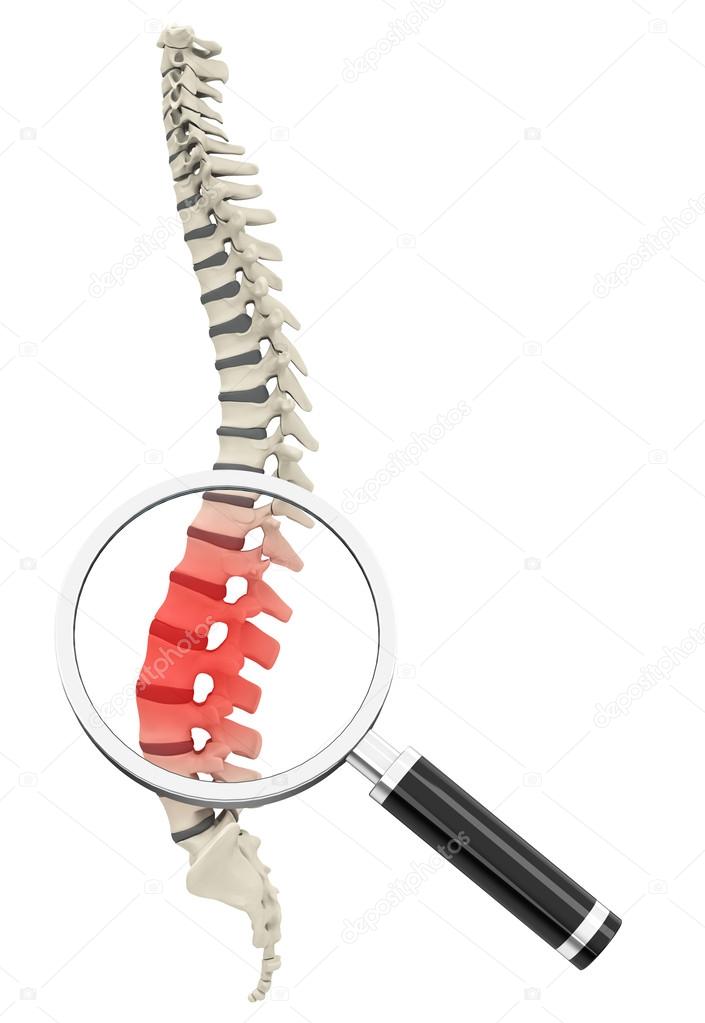
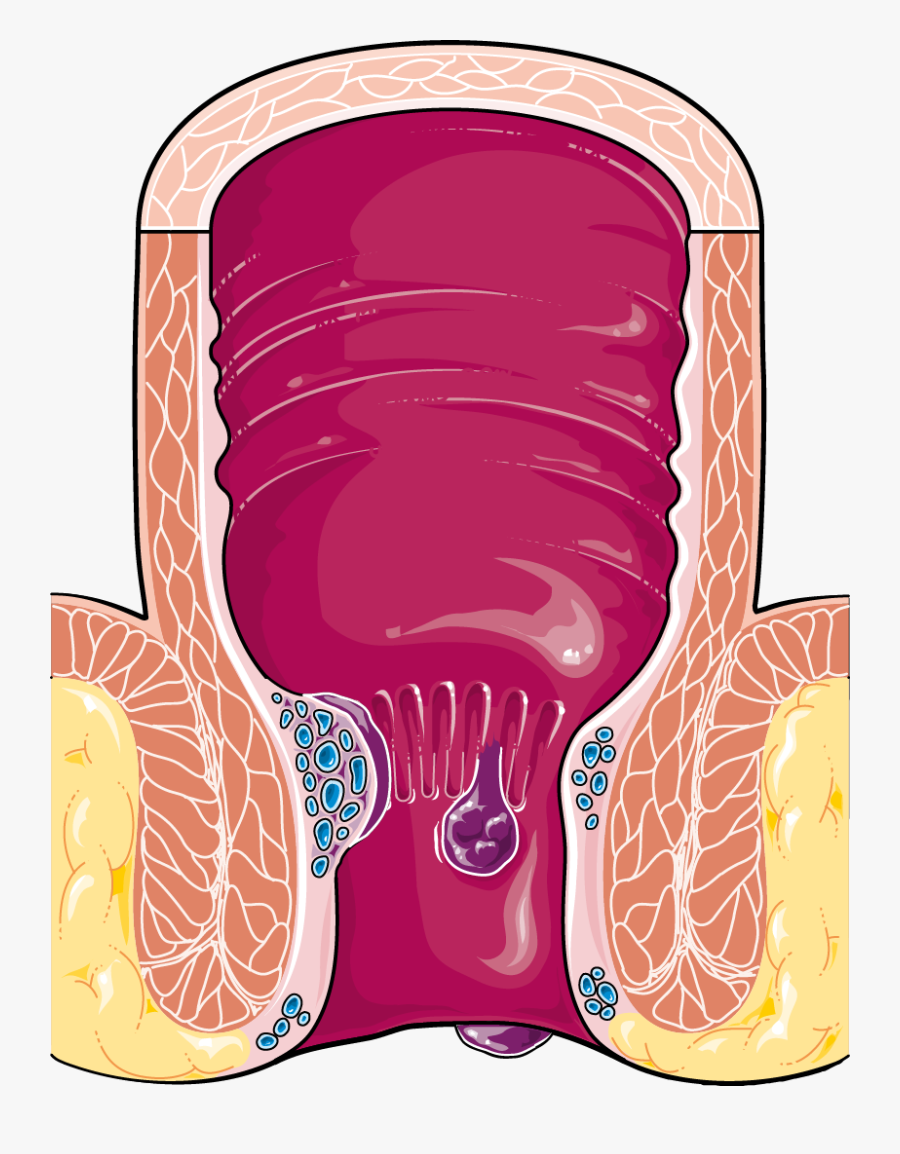


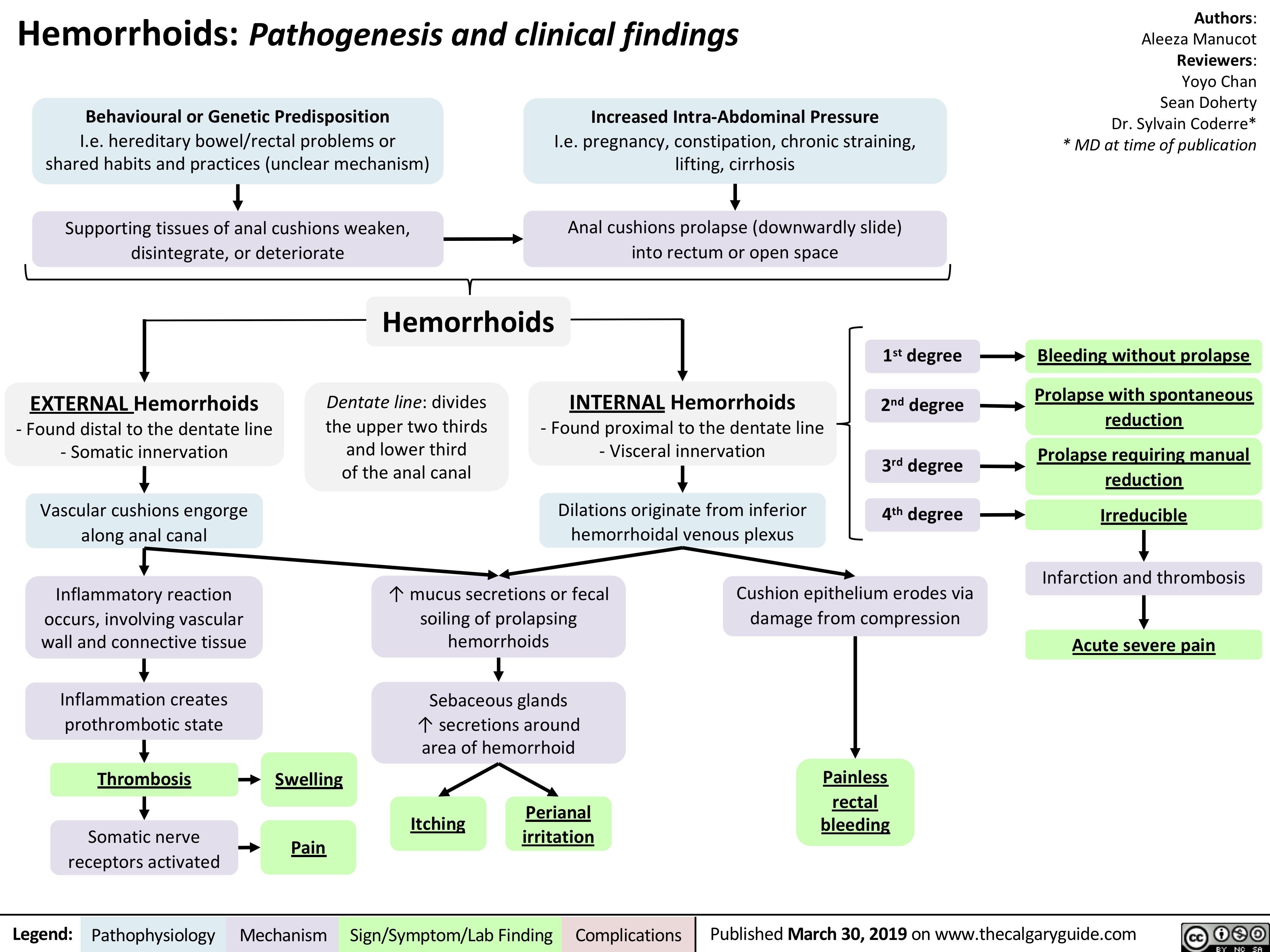


 This is different from a total hysterectomy in that your doctor doesn’t remove your cervix.
This is different from a total hysterectomy in that your doctor doesn’t remove your cervix.